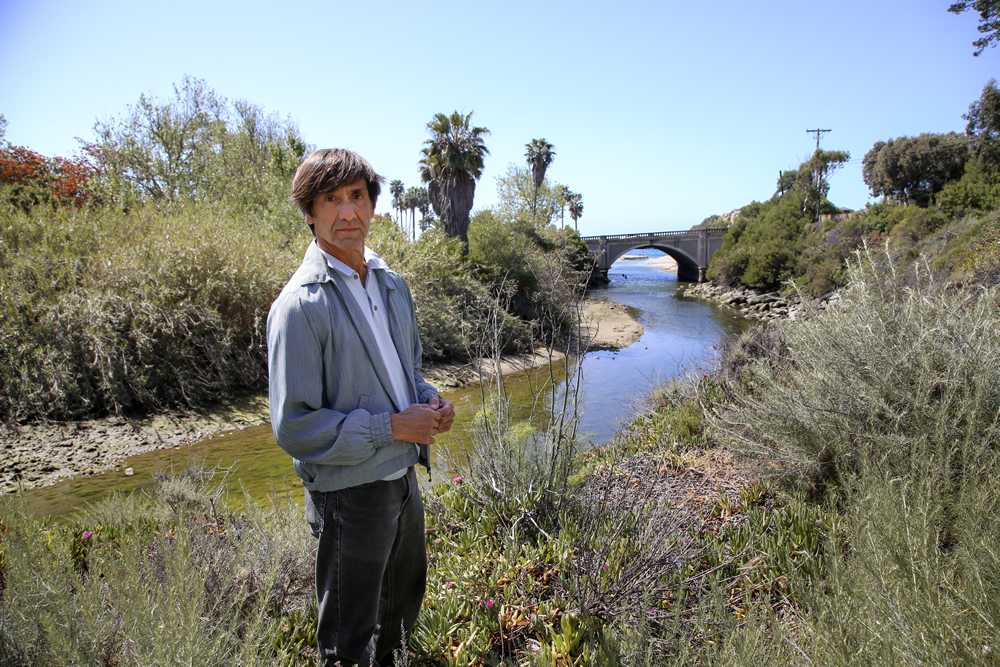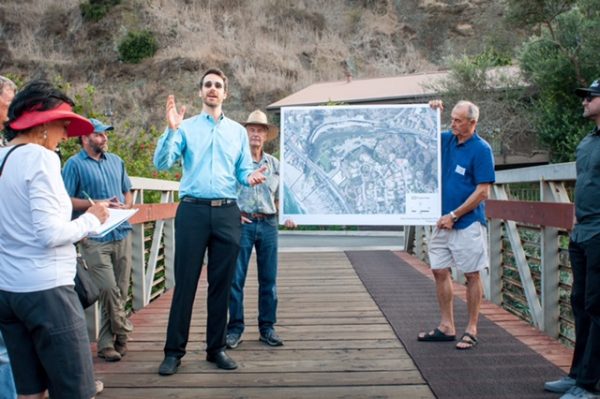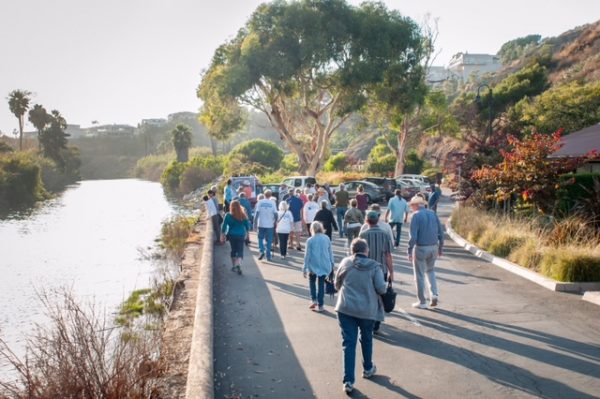By Rita Robinson, Special to the Independent
Long before urbanization subjugated the hills, canyons, bays and beaches of south Orange County, there was a dynamic little estuary far from the madding crowd. It nestled between the San Joaquin Hills in a pool formed by sand berms where Aliso Creek met the wide open Pacific.
The creek traveled 35 miles from the Santa Ana Mountains through California sycamores and live oaks, flowing through Aliso (Spanish for sycamore) Canyon and wending its way to the sea. At its final destination, strong waves regularly built sand berms that shored up its mouth most of the year, pooling the creek’s waters and creating an estuary.
And there the magic would happen.

Native cattails, pickleweed and tule dotted the creek’s edges, giving shelter and sustenance to pond turtles, mallards, egrets and herons, and, yes, Western steelhead trout, even red-legged frogs. The final 2,000 feet of the creek, now artificially straightened by a concrete channel running through The Ranch resort and golf course, once covered 14 acres of native wetland and sandbar habitat.
The tiny tidewater goby, a two-inch Piscium specialist that lives only in California’s lagoons and brackish estuaries, was once prolific. Listed as endangered, it’s now considered a threatened species by the U.S. Fish and Wildlife Service. The little gray goby hasn’t been seen here for 30 years.
“There is essentially zero native vegetative wetland habitat left,” said Nick Garrity, hydrologist and civil engineer for Environmental Sciences Associates in San Diego.
But all that could change.
At the behest of the Laguna Ocean Foundation, Garrity mapped out a comprehensive plan to restore half of the original Aliso Creek estuarine wetlands to its original vitality in a presentation titled the Aliso Creek Estuary Restoration at The Ranch on Thursday, Oct. 12.
“It’s a mess now,” LOF board member Ed Almanza said of the rank waterway. “It’s not functional. It’s a broken system.” Almanza, an environmental planner specializing in conservation, is spearheading the project.

The first obstacle tackled in the long-range plan is a 120-space overflow parking lot for county-operated Aliso Beach and a water-intensive grass park and picnic area, which dwindled the habitat by 75 percent, Garrity said. The area was once eyed by a city committee for a skateboard park.
Another obstacle is fertilizer-filled run-off from upstream communities, which induces algae blooms that suffocate indigenous species. It also causes the ephemeral creek to unnaturally flow during the dry season when the creek would normally pool, creating the estuary. But the constant flow also induces skimboarders to clandestinely break the berm to ride the rolling waves created by the run-off, pulling the plug on the pooling.
Using an 1885 topographic map detailing the creek’s historic ecology, restoration could return the habitat to its original health, said Garrity; maybe even more so, since cattle once roamed upstream canyons and degraded water quality and plant life.
Restoration begins at the bridge on The Ranch property.
According to Garrity’s architectural renderings, the overflow parking spaces could be relocated along the road on the north bank of the creek, owned by South Coast Water District, next to a proposed nature center with interpretive viewpoints overlooking the creek, a bridge and boardwalk.

The picnic area and playground on the beach side of the pedestrian tunnel under Coast Highway would be moved south, closer to another parking lot there. This would allow the estuary to spread with the natural flow of a more expansive creek and wetlands, Garrity said. The removal of the concrete channel is also etched into the plans with support for the banks provided by riprap instead.
The multi-phase strategy could take years, Almanza said, noting that discussions have begun with local governing agencies. The next phase calls for conceptual design and cost estimates scheduled for completion in January.
The research and three-hour presentation that included a tour along the creek was funded by a $300,000 grant from the California State Coastal Conservancy, with another $30,000 coming from private donations, Almanza said.
Political support for an environmental project is also essential, he added . Orange County Supervisor Lisa Bartlett and state Senator Pat Bates both pledged support. But the biggest advocates will be people who care about restoring lagoons to Laguna, Almanza commented. The plan will be presented to the Laguna Beach City Council on Tuesday, Nov. 14.
Almanza stated he and his team are “fairly confident” the project will fly as a restoration prototype. It could be a model amid the 15,500-acre chain of estuaries and wetlands along Southern California’s coastline, he pointed out.
Almanza cited a survey among town environmental groups that put cleaning up the creek and estuary as a top priority. “Everybody seems to care about clean water,” he said. Skimboarders, he added, will be gently asked to honor the natural habitat by leaving the berm alone.





[…] was standing in a pool of brackish water in my garage when I read the Indy’s “Estuary Re-envisioned for Degraded Aliso Creek.” I then balled up the paper to plug the encroaching water. Area plumbers came. Area plumbers […]
[…] and dry creek beds,” said Mike Beanan, a Bluebelt co-founder. The estuary and sand berm provide a habitatfor protected species such as the tidewater goby and southern steelhead […]